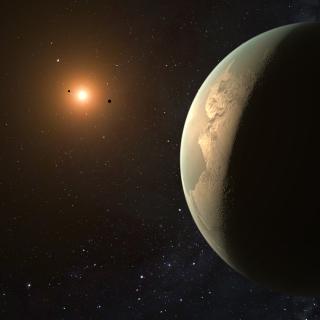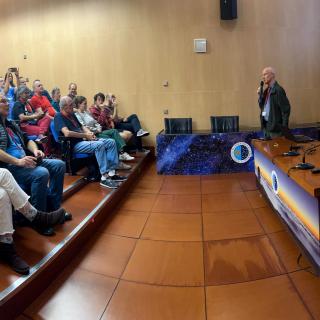Astronomers at the Instituto de Astrofisica de Canarias (IAC) -- Alister Graham, Peter Erwin, Nicola Caon, and Ignacio Trujillo -- have discovered a fundamental connection between supermassive black holes -- the most massive singular objects in our Universe -- and the galaxies at whose centers these objects reside. This connection was found by studying the global distribution of stars within galaxies, the concentration of which is related to the mass of the central supermassive black hole. The work is to be published in The Astrophysical Journal Letters.
Supermassive black holes are one million to over a billion times more massive than our Sun. Even so, the `event horizon' (the surface from which no light can escape because of the strength of the gravitational field) of a one million solar mass black hole is only about 4 times larger than our Sun -- they are very dense objects. The Sun weighs 2 times 10^(30) kg (almost five hundred thousand times heavier than the Earth), and is 1.4 million kilometers in diameter. These supermassive black holes have been found in a large number of galaxies, including our own.
The global distribution of stars within both elliptical galaxies and the bulges of spiral galaxies has been found to be directly related to the mass of a galaxy's central supermassive black hole. More massive galaxies are not simply bigger versions of less massive galaxies, as has been frequently assumed in the past. Their entire structure is different: more massive galaxies are more centrally concentrated. The precise degree of concentration has now been shown to correlate extremely well with the mass of the central supermassive black hole. "This is an important realization which provides further insight into the formation of both galaxies and their central black holes. We now know that any viable theory of supermassive black hole growth must be connected with the (eventual) global structure of the host galaxy," according to project leader Dr Alister Graham.
It would appear quite natural that more centrally concentrated galaxies -- which are those which have stronger gravitational potential wells -- can more efficiently supply gas and material to fuel their central black holes. The researchers note, however, that it is possible that the processes which shaped the galaxy and built the supermassive black hole operated in tandem. Whether or not smaller primordial black holes existed before galaxies formed around them remains an open question.
Observational implications
This discovery also has important practical advantages. The discovery last year of a relation between central black hole mass and galaxy velocity dispersion (a measure of average stellar motions within a galaxy) meant that it was possible to estimate a galaxy's central black mass from the galaxy's velocity dispersion. Unfortunately, this is a time-consuming process: to obtain a velocity dispersion measurement, the light from a galaxy must first be dispersed into its constituent wavelengths (colors). This dilutes the galaxy light and thus requires long exposure times. With this latest discovery, astronomers can now predict black hole masses directly from the images of galaxies, by measuring the radial fall-off in luminosity and thus determining its concentration. This way, thousands of very distant, high-redshift galaxies can be studied cheaply and effectively. Astronomers hope to gain a deeper understanding of the evolution of these enigmatic objects, which appear prevalent throughout our Universe.
This work is based on archival data obtained with the NASA/ESA Hubble Space Telescope, and the Isaac Newton Group of Telescopes at the Spanish Observatorio del Roque de Los Muchachos (La Palma).


